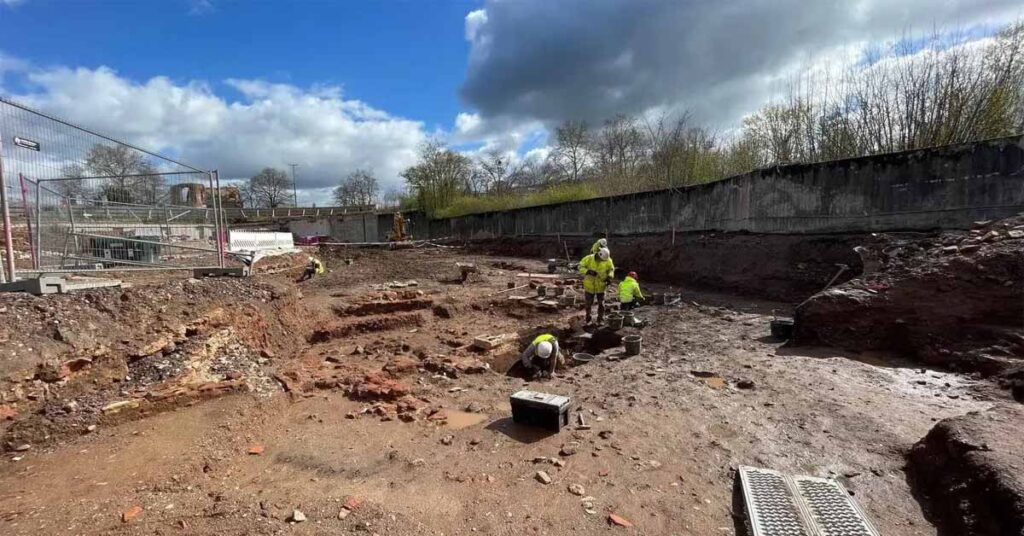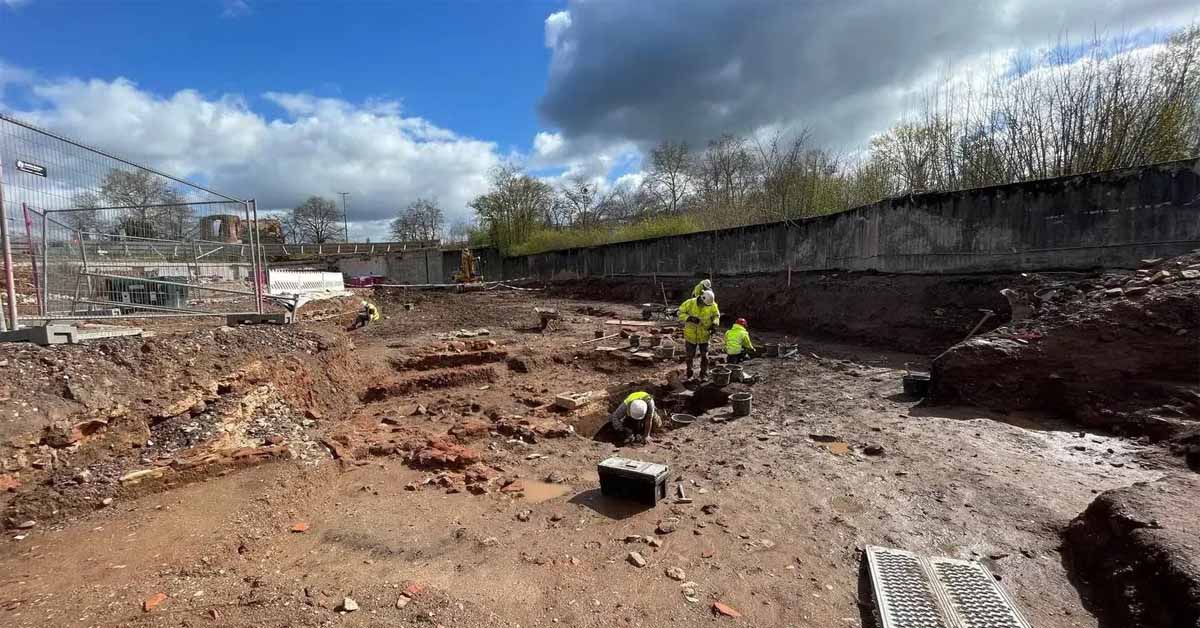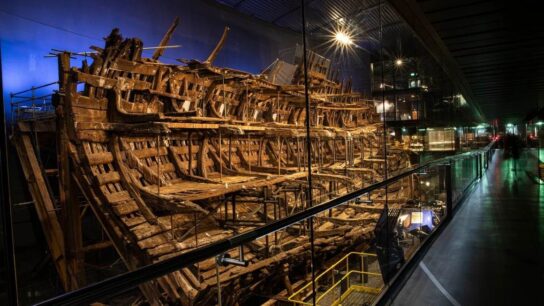Newly Discovered Roman Mithraeum in Trier Unveils Rare Relief of Mithras’ Torchbearer Cautes
An excavation at the site of a former police headquarters in Trier has unearthed the remains of a Roman Mithraeum with a large surviving relief of one of Mithras’ attendants. This is only the second Mithraeum ever discovered in Trier.

A limestone relief four feet high is a depiction of Cautes, one of Mithras’ torchbearers. In the iconography of Mithraism, the torchbearers Cautes and Cautopates flank Mithras as he sacrifices a bull in the tauroctony.
Cautes is usually to his left, holding a torch upwards. Cautopates is on the right, holding his torch downwards.
They may have been symbols of the rising and setting son, or the spring and autumnal equinox. Like Mithras, they wear Persian garb with the Phrygian cap, but they are always shown as smaller than the god himself.
Trier was founded by the Celtic Treveri people in the 4th century B.C. It was refounded as Colonia Augusta Treverorum by Augustus Caesar in 16 B.C. after his defeat of the Treveri.
It became capital of the province of Belgic Gaul in the late 3rd century and was one of the largest cities in the Roman Empire, with a population of 75,000 or more.
During the Tetrarchy (Diocletian’s system dividing rule of the empire between two senior emperors, the augusti, and two junior emperors, the caesares), Augusta Treverorum was one of the four capitals where the tetrarchs established their headquarters. The western caesar resided there, close to the troublesome Rhine border.
The mystery religion of Mithraism was extremely popular in the Roman army between the 1st and 4th century.
Its adherents in the legion spread the secretive cult with its distinctive iconography (Mithras born from a rock, the sacrifice of the bull, the banquet with the sun god Sol) throughout the empire.
Mithraea were usually built underground, as was the newly-discovered one in Trier. Coins found at the site indicate the cult room was destroyed in the late 4th century A.D., a common fate for Mithrae after Christianity rose to power and obliterated its ancient religious rivals.

The relief of Cautes is the only figural representation that survived the destruction. The remains of the central aisle and brick benches where the devout sat in front of the tauroctony have also been unearthed since the first discovery in February.
Excavation of the site is planned to take 18 months all told. When it is concluded, the city’s new main fire station will be built where Mithras and, more recently, the police once presided.
The relief is currently undergoing conservation at the Rheinisches Landesmuseum in Trier.




